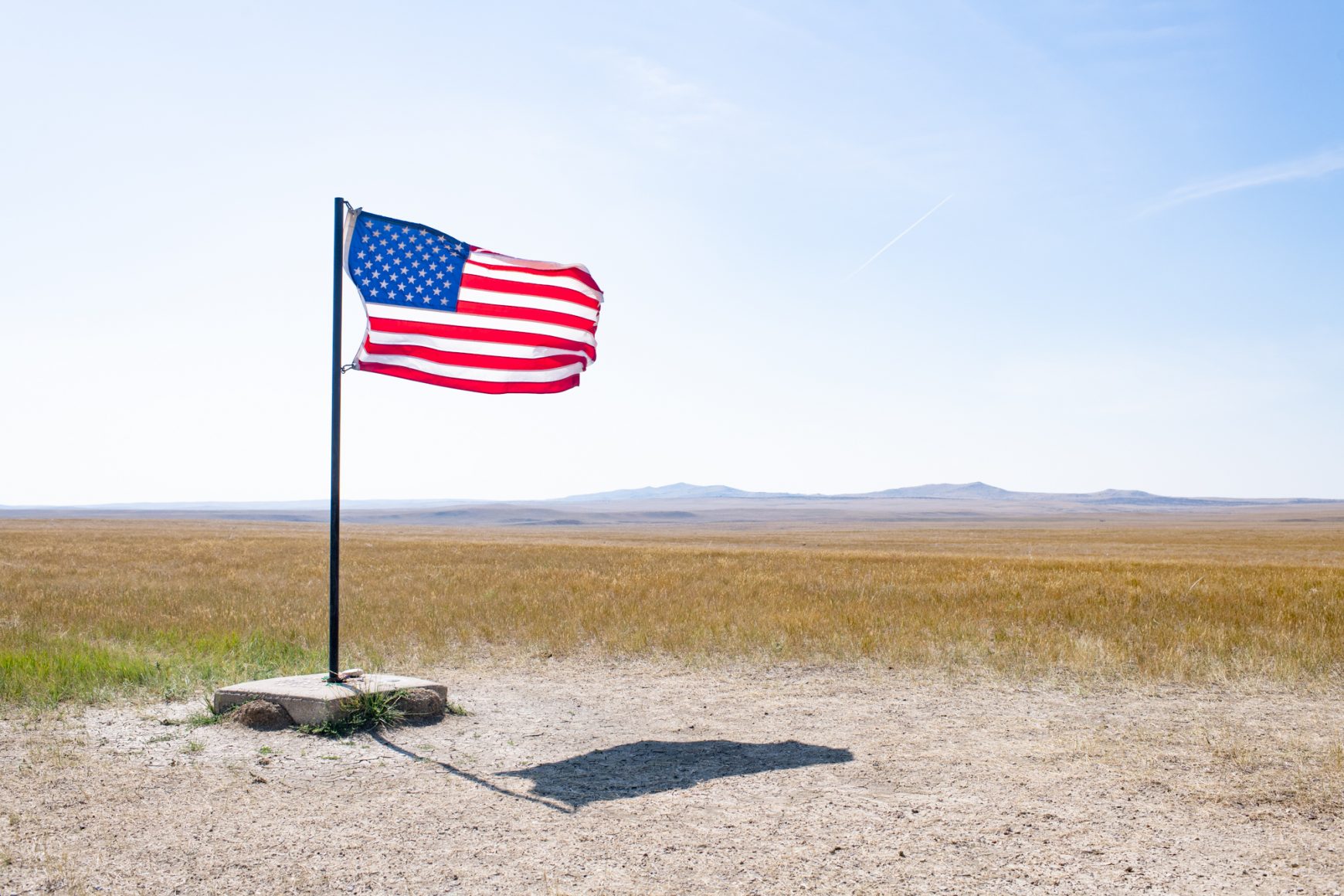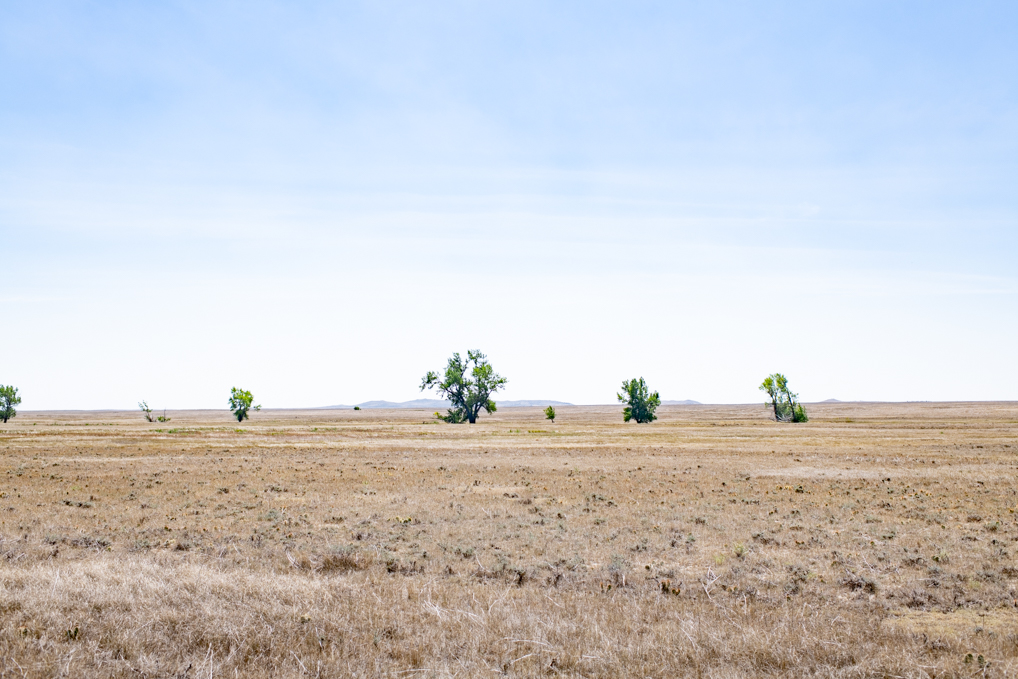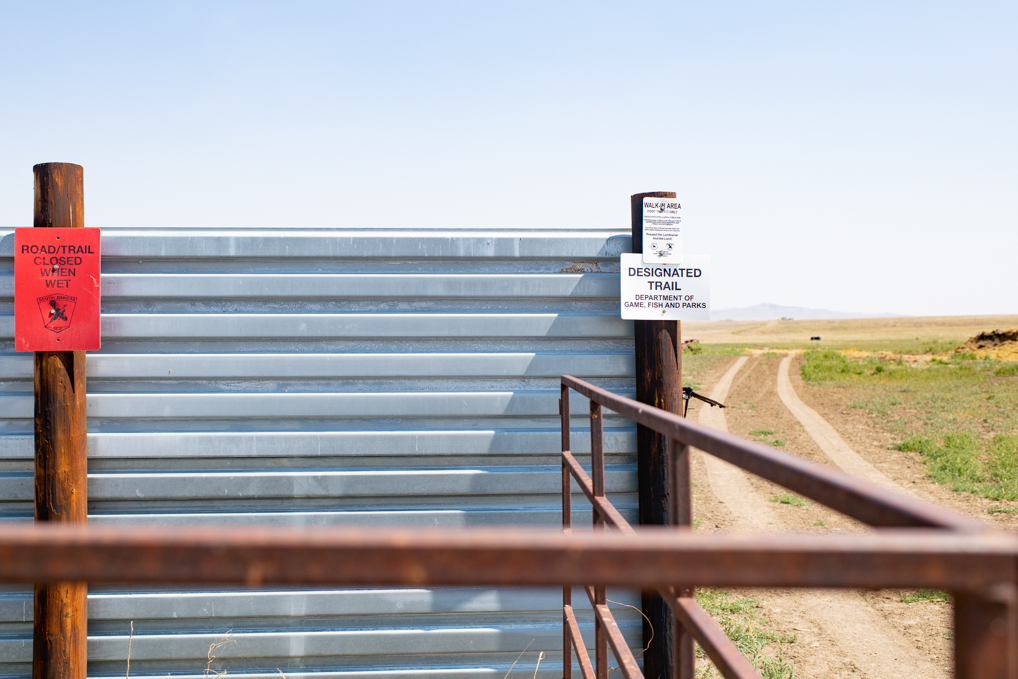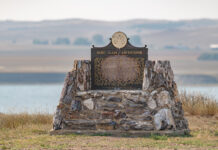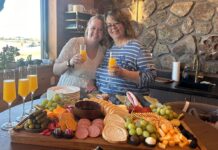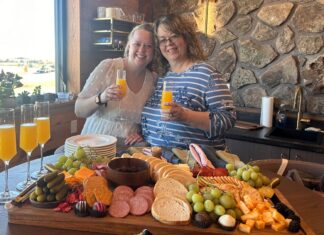605 packed up and joined South Dakota Game, Fish & Parks (GFP) in Belle Fourche to meet at the Conner Ranch in Butte County on a muggy August morning.
On the way alongside the gravel road, the crew stopped by the Geographic Center of the Nation to soak in the scenery. Further north, we arrived at the home of Dan and Cindi Conner, who are part of the Walk-in Area (WIA) program. Wildlife conservation officer Bill Eastman greeted us there with the couple as well, and clearly the two were no strangers.
“I moved here in 2002. Dan and Cindi have been enrolled in the Walk-In Area program since early 2000, so they had already enrolled their property,” said Eastman. “South Dakota is a small world. They were previously friends with my in-laws, who used to work for a ranch northeast of here.”
“Our relationship is real good. He’s pretty easy to work with, and we get along well,” added Dan.
There are several access programs offered to meet the needs of landowners, while providing opportunities for sportsmen and women. The WIA, such as the Conners’ ranch, are private lands leased for public hunting access by GFP and require no further permission from the landowner to hunt in these areas.
DID YOU KNOW?
There are 1.25 million acres enrolled in the WIA program. And there are about 1,400 landowners that are participants.
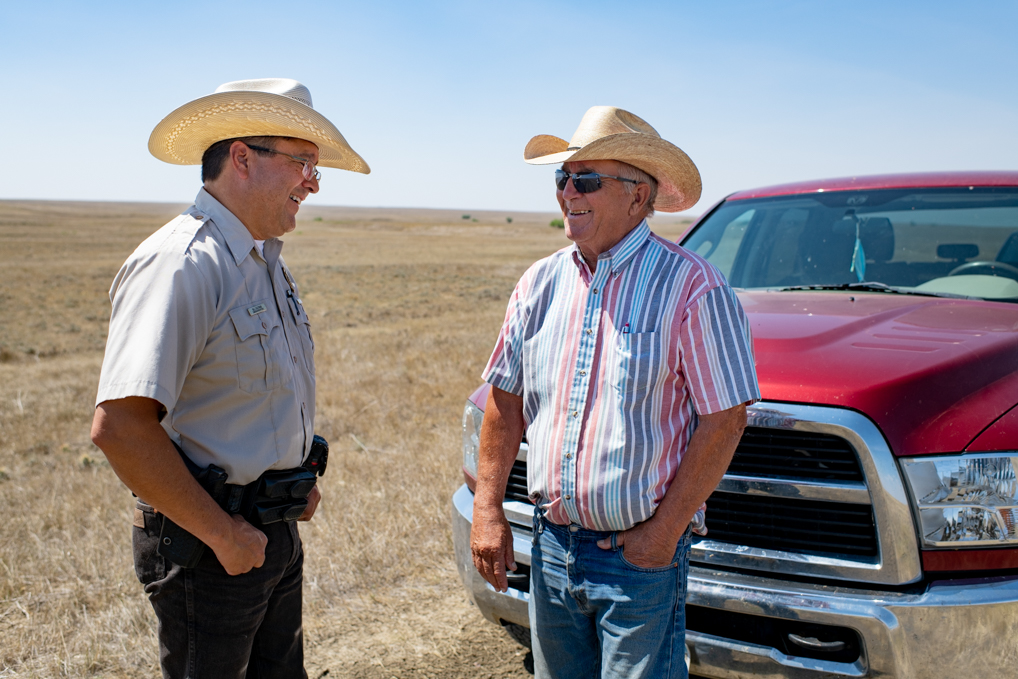
Landowner permission is required for fishing, trapping or other outdoor recreation, and landowners are provided a set payment based on the size and quality of acres offered. A few differences of WIA from the Controlled Hunting Access Program (CHAP) program (for the southeast, South Dakota story click here), are hunters are not required to register nor check in prior to hunting on the property, the property is open to an unlimited number of individuals each day, and hunters are not required to reserve a spot and may hunt on the property at any given time.
WIA areas are often enrolled annually and Eastman says showing respect to both the land and landowner is key for keeping these opportunities available for years to come.
“I’m a born and raised South Dakota resident. I’ve had a passion for the outdoors my whole life. Hunting and Fishing and whatever it takes to be outdoors is what I live for.” – Bill Eastman
“The majority of hunters out there are going to be respectful,” said Eastman. “But there’s a handful of people out there that are definitely not intentionally going to do something wrong but might be opportunistic. I do believe that it is my job to make sure that they behave from then on out.”
His job is to also represent and protect the landowner.
“I’m never going to lead landowners astray, and I’m always going to make sure that they’re satisfied with the program for as long as they’re involved,” said Eastman. “That is working with them and knowing what their tolerance level is, and working with the hunters and holding them accountable for their actions when they come out here and use the opportunity that this landowner is giving them.”
“I have a lot of respect for Dan and CIndi. They are a huge benefit to our local community. Our relationship has gone further than the walk-in program. We go to the same church together.” – Bill Eastman
Dan and Eastman let us jump in their truck and while we headed down the designated trail created and maintained by the Conners to help ease hunter confusion and to make it easy to access the hunting ground.
“The hunters greatly appreciate this road access, they really respect it. The designated trail goes for about three miles, so they can drive down, park, and get out to hunt. It’s worked real well.”
As we drove, the pair talked about habitat and land conservation.
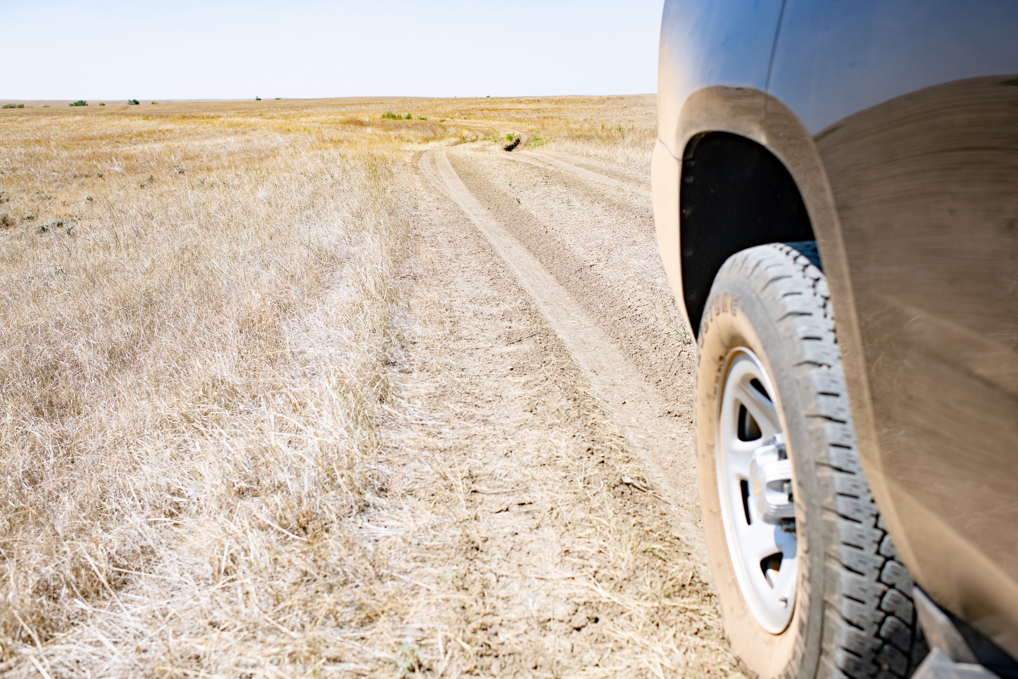
“Dan and Cindi’s property is a quality piece of land, and it’s all due to their efforts. They are great stewards of this land up here, which is reflected not only in what they do for range management, but for wildlife management, as well,” said Eastman.
South Dakota’s wildlife is diverse across the state with its varied landscapes, but the Conner ranch alone has multiple species.
One that’s seen a statewide decline that lives on the land is the Sage-Grouse. The type of bird once inhabited the western third of South Dakota outside of the Black Hills, but now primarily inhabits only portions of Butte and Harding counties.
Dan said, “We have quite a few Sage-Grouse through here. Seemed like the numbers are up this year.”

Eastman says this is a humble reaction, as the Conners work hard making sure Sage-Grouse thrive on their land and continue to grow.
“I just respect everything that Dan and Cindi have done with this ranch. The habitat work they’ve done here is amazing,” said Eastman. “You can look down at this creek bottom where maybe other areas have been grazed off significantly and the vegetation is sparse to none, but here you’re going to find vegetation through the entire area, which is a testament to their hard work and commitment to land stewardship and conservation.”
He continued, “I absolutely respect them for our relationship as friends and the relationship in support of hunters, as well.”
And hard work it is, according to Dan.
“There’s been a lot of ups and downs. We’ve lived here about 42 years, and there’ve been some good years and there’ve been some tough years. Maybe this year is one of the driest years I’ve seen. It stays so hot for so long,” he said. “The price of hay is really prohibited.
There’s going to be a lot of hard decisions with livestock. I don’t know what people are going to do for hay. Water is serious. We’re fortunate to have a neighbor supplying us water.”
“I encourage anyone who’s hunting private land to treat it like it’s your own yard. You’re not going to leave litter in your own yard,” said Eastman. “You’re not going to park vehicles where they’re not supposed to be. You’re going to be gracious and respectful of the opportunity that landowner is giving you.”
For more information, visit gfp.sd.gov.


